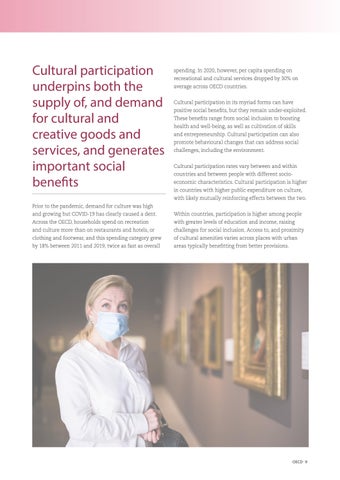Cultural participation underpins both the supply of, and demand for cultural and creative goods and services, and generates important social benefits
spending. In 2020, however, per capita spending on recreational and cultural services dropped by 30% on average across OECD countries. Cultural participation in its myriad forms can have positive social benefits, but they remain under-exploited. These benefits range from social inclusion to boosting health and well-being, as well as cultivation of skills and entrepreneurship. Cultural participation can also promote behavioural changes that can address social challenges, including the environment. Cultural participation rates vary between and within countries and between people with different socioeconomic characteristics. Cultural participation is higher in countries with higher public expenditure on culture, with likely mutually reinforcing effects between the two.
Prior to the pandemic, demand for culture was high and growing but COVID-19 has clearly caused a dent.
Within countries, participation is higher among people
Across the OECD, households spend on recreation
with greater levels of education and income, raising
and culture more than on restaurants and hotels, or
challenges for social inclusion. Access to, and proximity
clothing and footwear, and this spending category grew
of cultural amenities varies across places with urban
by 18% between 2011 and 2019, twice as fast as overall
areas typically benefitting from better provisions.
OECD . 9




